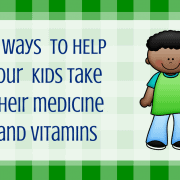Time-Outs Are Not Detrimental Say Researchers
Most parents have given time-outs a try as away to discipline a child. The results from time-outs vary, with some efforts more successful than others for a range of reasons. Yet the approach is an inexpensive, relatively simple one to try.
That said, the practice has been dogged by buzz that perhaps the intervention is harmful to a kid’s psych, to the parent-child relationship, and maybe it can affect a child long-term, resulting in problems down the road. A 2014 Time Magazine article “Are Time-Outs Hurting Your Children?” fueled the debate.
A recent study from the University of Michigan boosts the concept that time-out is useful with minimal negative results.
The researchers suggest: “There was no differences in emotional and behavioral health between kids whose parents reported using time-outs and those who didn’t.”
“Some reports in the media and by select organizations have suggested that time-out is ineffective and even harmful,” says lead author Rachel Knight, Ph.D., pediatric psychologist at University of Michigan C.S. Mott Children’s Hospital.
“There are some alarming claims that time-outs can damage the parent-child relationship and negatively affect emotional health. But the research simply doesn’t support those claims. We did not find a relationship between time-outs and negative side effects in children.”
There was no association between reported use of time-outs and negative symptoms in later childhood, including anxiety, depression, internalizing or externalizing problems, aggression, rule-breaking behavior, or self-control, according to the findings in the Journal of Developmental and Behavioral Pediatrics.
There also weren’t any differences in the measure of creativity when the children were about to enter kindergarten.
Knight says that she and fellow children’s health experts were concerned by the amount of inaccurate information widely available about time-outs.
“Parents are constantly questioning whether they are doing the right thing for their children,” she says.
A previous Mott-led study found that close to 30% of websites portrayed time-out negatively. Some have criticized the disciplinary strategy as having the opposite desired effect, possibly leading to escalating problem behaviors.
Parents may not be aware that time-out is one of the only child discipline strategies currently recommended by the American Academy of Pediatrics, Knight says. Time-out has been shown to be effective in addressing behavior challenges across several ages, including infants, toddlers and preschoolers, school-age children and adolescents.
“There’s a wealth of research on how effective time-outs can be in reducing problematic behavior when they are used appropriately,” she says. “It’s a parenting strategy that’s often misunderstood and misused.”
Keys for success to avoid negatives
Needless to say, there are a lot of variables involved with this discipline technique, from when and where it is used, for what issues, for how long, and the personality of the child and parent.
Example of a misguided efforts: Putting a child in a dark closet for the time-out, using too long a period, or the youngster not being able to understand what has transpired.
Know your child and be observant. Typical advice is for the length of time to be one minute per year of the child’s age. A 3-year old would have a 3-minute time out.
Consistency, structure, a calm demeanor and positive environment are keys to effectively using time-outs, Knight says. The process should be pre-planned and understood by both parents and children rather than being introduced in the heat of the moment to avoid yelling or scolding.
“Catching” a child exhibiting good behavior is also just as important as enforcing consequences when they break the rules, she notes. Journal report here.









